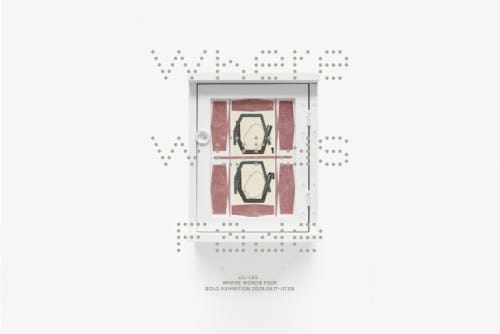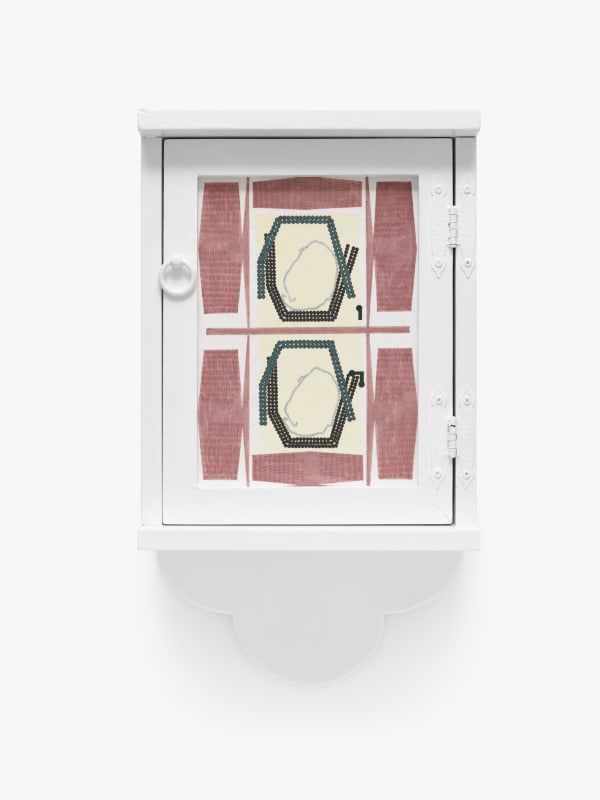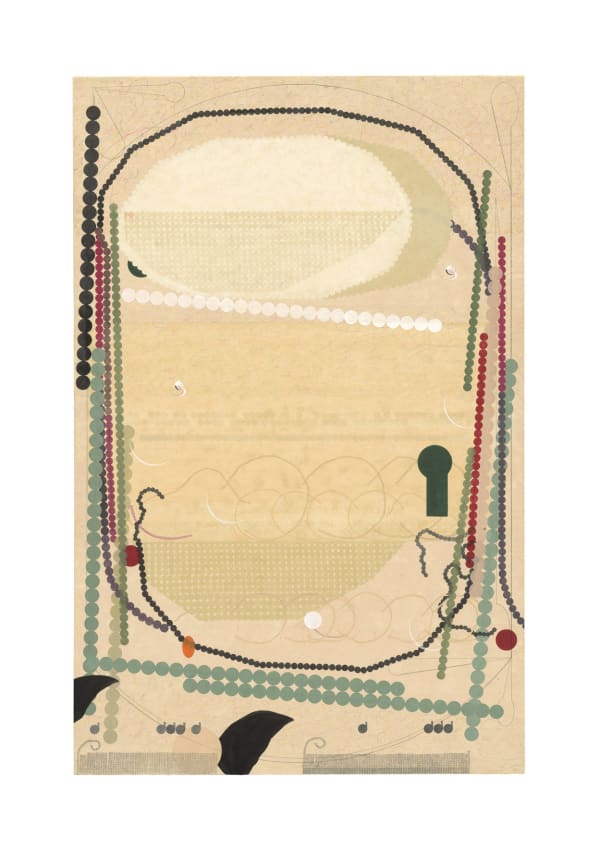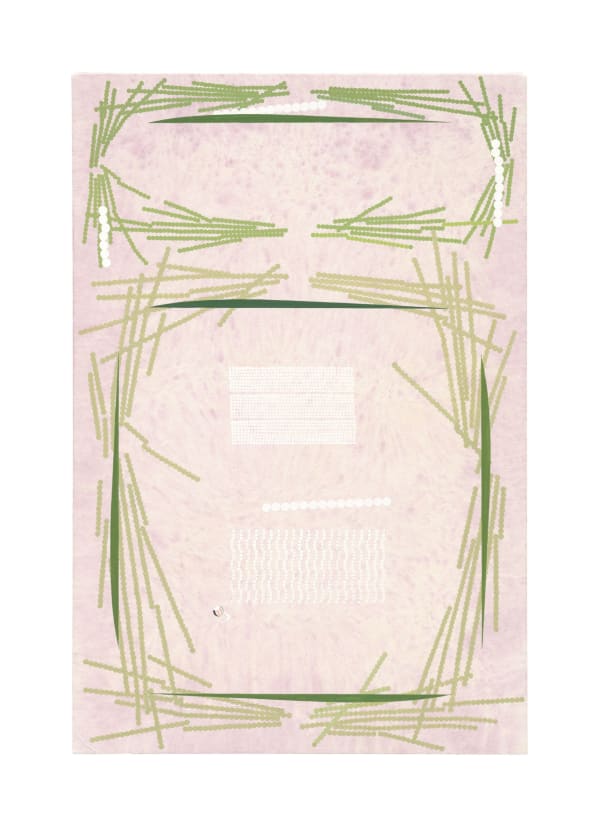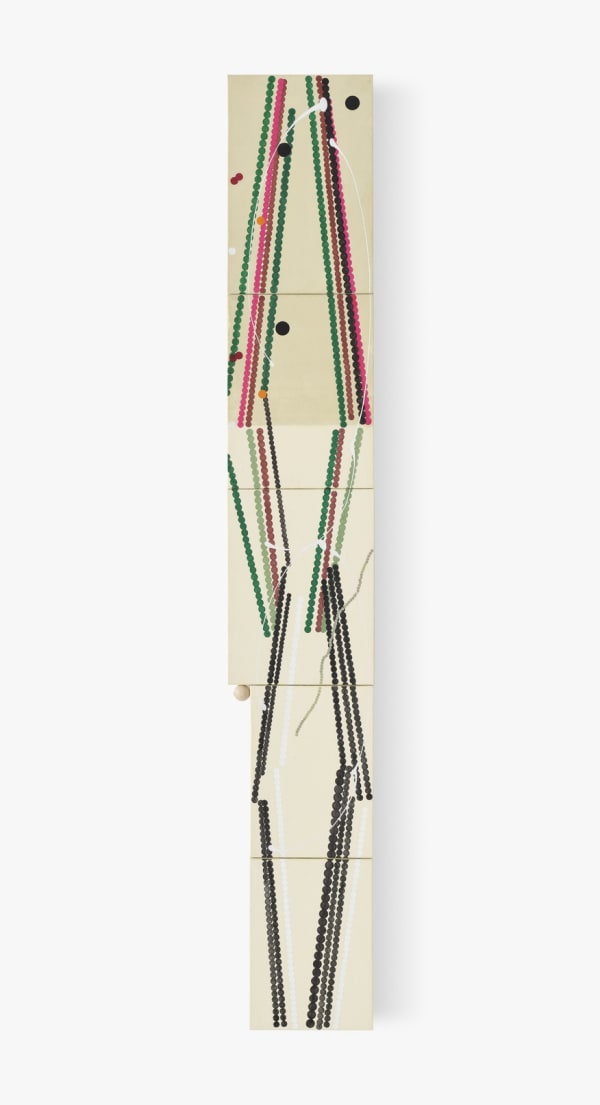Where Words Fade: Lili Lee Solo Exhibition
■ 地點 Venue | 大河美術 RIVER ART GALLERY
RIVER ART GALLERY is pleased to present “Where Words Fade,” the first solo show by Korean artist Lili Lee. Centered on the concept of “visual rhythm” as a core of her practice, the exhibition presents the artist’s nuanced observations and poetic transformations of the relationships between language, emotion, and inner states. “Where Words Fade” reflects Lee’s contemplation on the essence of artistic creation—when language begins to falter and silence takes over, images emerge as the most immediate and potent carriers of emotion and energy. In these moments, emotions that resist articulation continue to resonate through visual language, opening up a deeper level of dialogue between work and viewer.
Born in 1993 in Daegu, South Korea, Lili Lee received her BFA in East Asian Art from Dankook University in 2019. Her work has been exhibited in Korea, France, and Toronto, and she is currently based in South Korea. Deeply influenced by her cultural background and personal memories, Lee began painting at an early age and was exposed to traditional Korean painting practices. Her artistic trajectory evolved from conventional techniques into a distinctive abstract language and contemporary visual expression. Her experiences living abroad and returning home have deepened her emotional connection to Korean culture and inspired a sustained exploration of folk beliefs and spiritual traditions. Her early works drew from the worldview of Korean shamanism, engaging in a visual dialogue with the unseen spiritual realm through talismanic imagery, religious symbols, and liminal visual contexts that blur the line between reality and the metaphysical. To move beyond narrative representation, Lee employs dots, lines, and geometric forms to construct abstract structures, seeking to visualize the movement of spiritual energy onto the canvas.
The motif of the “circle” recurs throughout Lee’s work, stemming from what she describes as an almost subconscious calling. Initially emerging organically in her compositions, the circle has, through repetition and sustained engagement, evolved into an inner language and a source of creative rhythm. Rather than serving as a specific symbol, the circle functions as a vessel of pure perceptual desire and immersive experience. The act of painting circles provides the artist with psychological grounding and fuels her creative impulse. Over time, this repetitive gesture has evolved into a structural cornerstone of her visual vocabulary, paving the way for the exploration and construction of emotional memory, primal instincts, and the subconscious.
In this exhibition, Lee further expands her inquiry into the relationship between language, dialogue, and rhythm. She approaches language as a sensorial structure—its tone, stress, and pacing generating a musical rhythm that shapes emotional intensity and multilayered meaning. In her work, the image is no longer a static visual unit but a rhythmic vessel for emotional flow. The circle, with its continuous and cyclical nature, becomes an ideal form to express emotional cycles and perceptual rhythms. Dots shift and transform in response to this rhythm—expanding, contracting, vanishing, and reappearing—creating a dynamic visual syntax imbued with temporality. Lee also attempts to transform the spatial and psychological atmosphere evoked by verbal interaction into elements of visual composition. Modulations in density, the movement of air, rhythms of light, and the perceptual state of being during dialogue, all become material for constructing what she describes as a “sensory landscape”—a visual field imbued with a deep sense of time and space.
With “Where Words Fade”, RIVER ART GALLERY seeks to present the artist’s enduring exploration of circles, rhythm, and abstract visual language, while revealing her deep contemplation on the nature of language and the boundaries of emotional expression within her creative context. This exhibition is not only a visual narrative interweaving personal memory and cultural identity, but also a visual experiment—one that maps out a resonant interplay between space, emotion, and symbol through a rhythm of perception. As language falls into silence, Lee’s rhythmic compositions— formed by dots and circles—become visible traces of emotional and cognitive flow. Within the subtle tremor of each piece, she evokes the quiet yet powerful inner voices that lie beyond the reach of words.
-
 Lili Lee|Seal the deal|2025|Mixed Media on Korean Rice Paper on Wooden Panel (Key Box Installation) 複合媒材、韓紙裱於木板(安裝於木製鑰匙盒)|51 x 29 cm
Lili Lee|Seal the deal|2025|Mixed Media on Korean Rice Paper on Wooden Panel (Key Box Installation) 複合媒材、韓紙裱於木板(安裝於木製鑰匙盒)|51 x 29 cm -
 Lili Lee|Guiding light in the field 2 泰山北斗 2|2025|Mixed Media on Korean Rice Paper (Hanji) 複合媒材於韓紙|30 x 125 cm
Lili Lee|Guiding light in the field 2 泰山北斗 2|2025|Mixed Media on Korean Rice Paper (Hanji) 複合媒材於韓紙|30 x 125 cm -
 Lili Lee|A heart within a heart 心中有心 |2025|Mixed Media on Korean Rice Paper (Hanji) 複合媒材於韓紙 |140 x 90 cm
Lili Lee|A heart within a heart 心中有心 |2025|Mixed Media on Korean Rice Paper (Hanji) 複合媒材於韓紙 |140 x 90 cm -
 Lili Lee|Like a field in bloom|2025|Mixed Media on Korean Rice Paper (Hanji) 複合媒材於韓紙|90 x 60 cm
Lili Lee|Like a field in bloom|2025|Mixed Media on Korean Rice Paper (Hanji) 複合媒材於韓紙|90 x 60 cm -
 Lili Lee|Turn the hourglass|2025|Mixed Media on Korean Rice Paper (Hanji) 複合媒材於韓紙|115 x 17.5 cm
Lili Lee|Turn the hourglass|2025|Mixed Media on Korean Rice Paper (Hanji) 複合媒材於韓紙|115 x 17.5 cm
